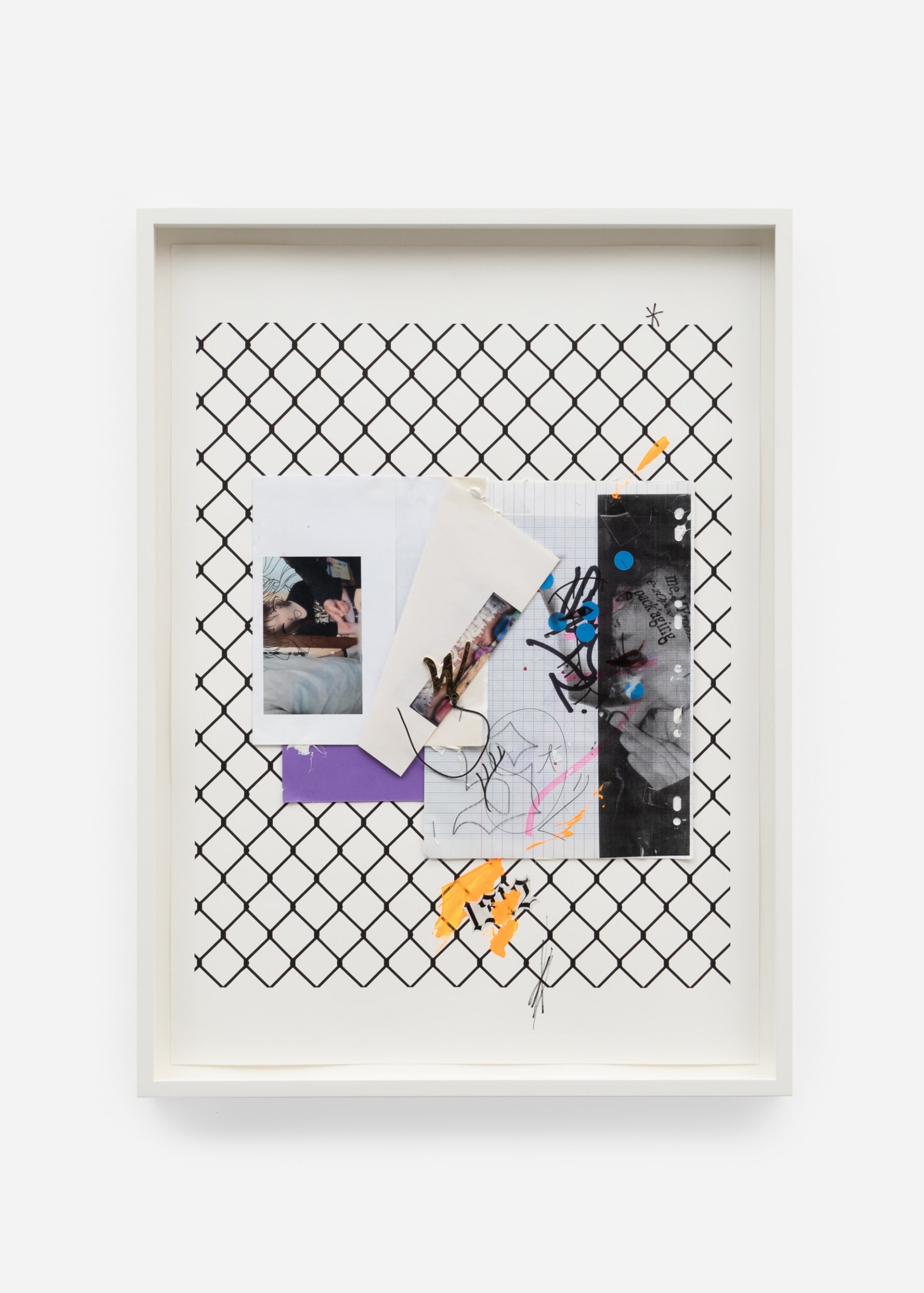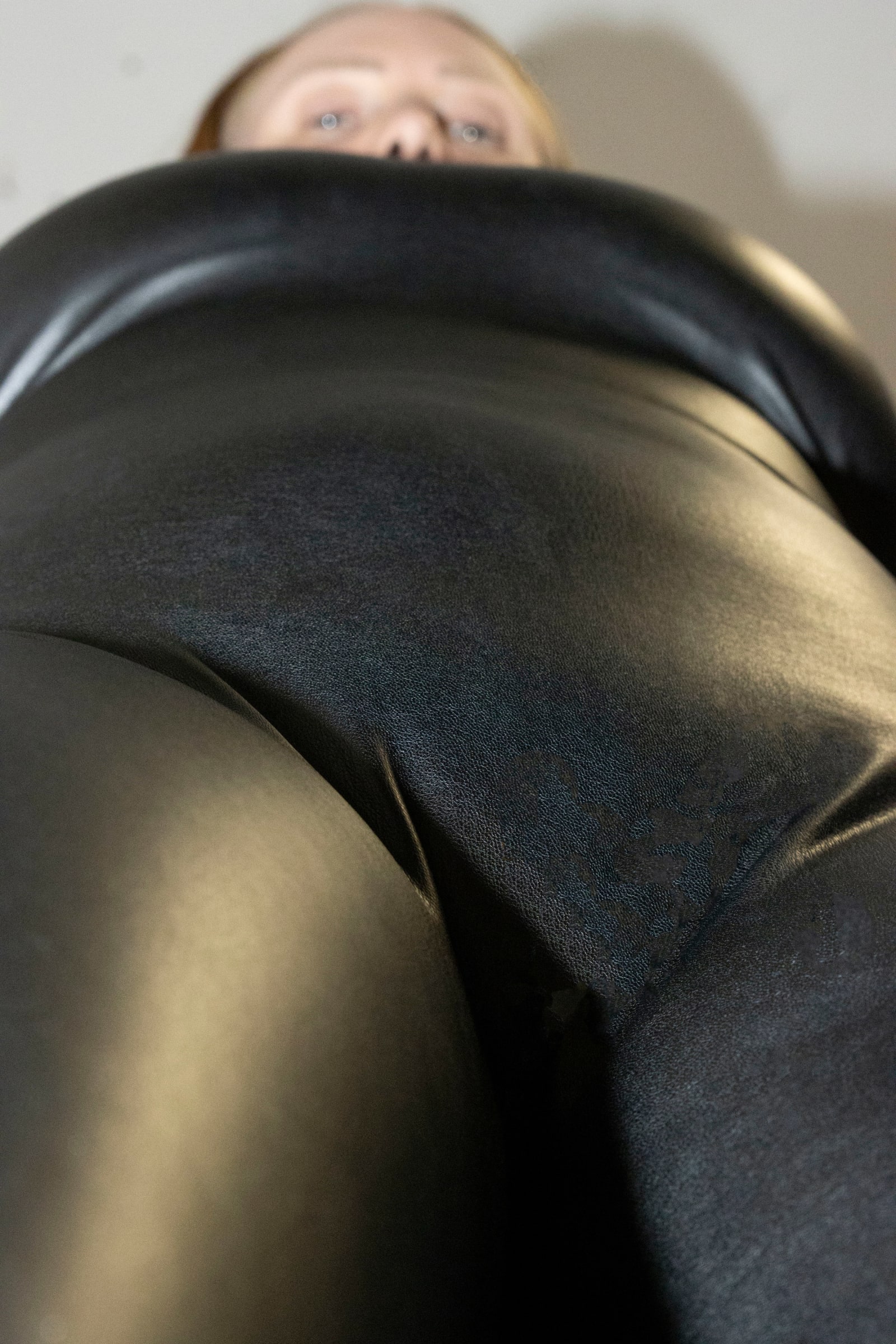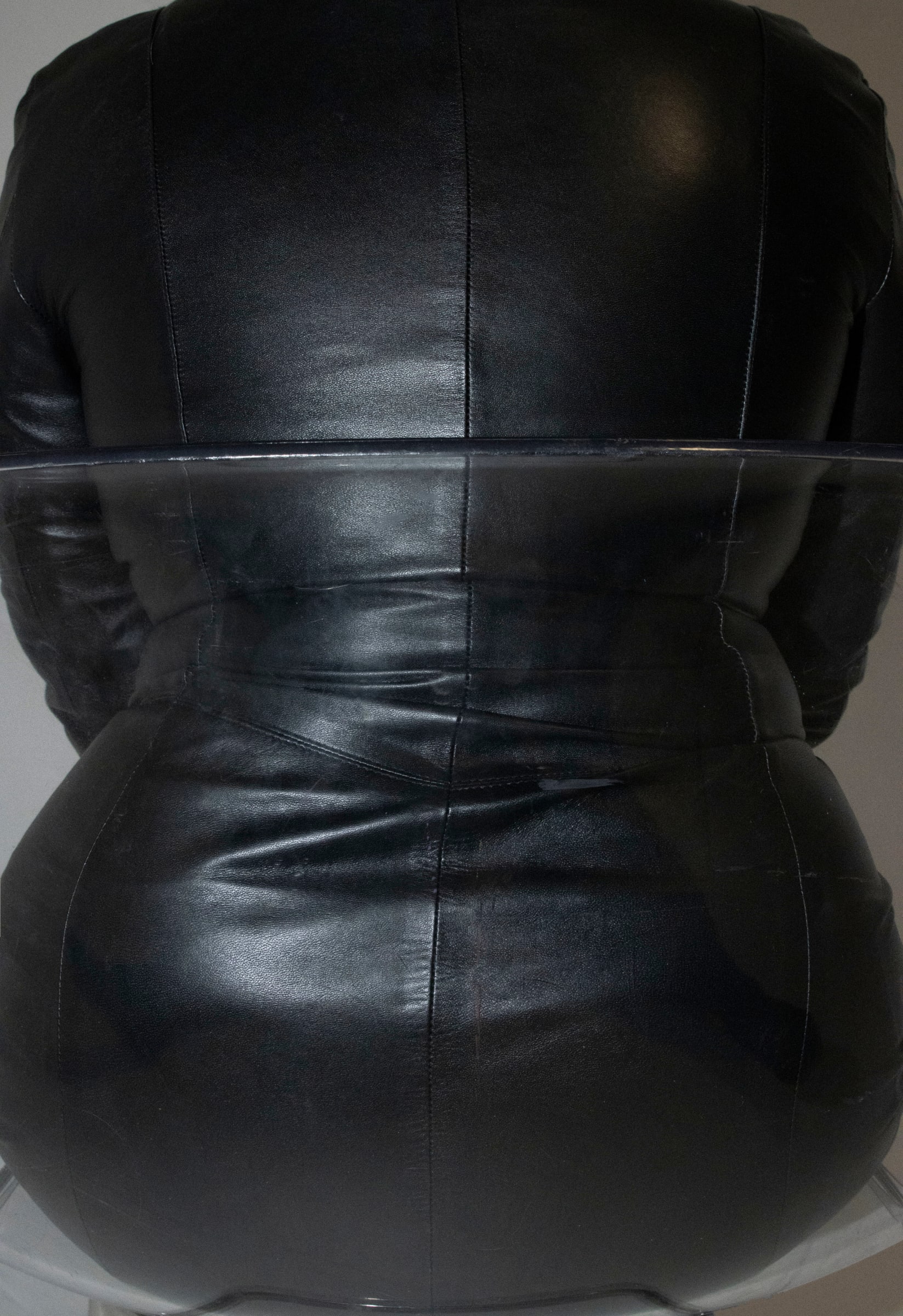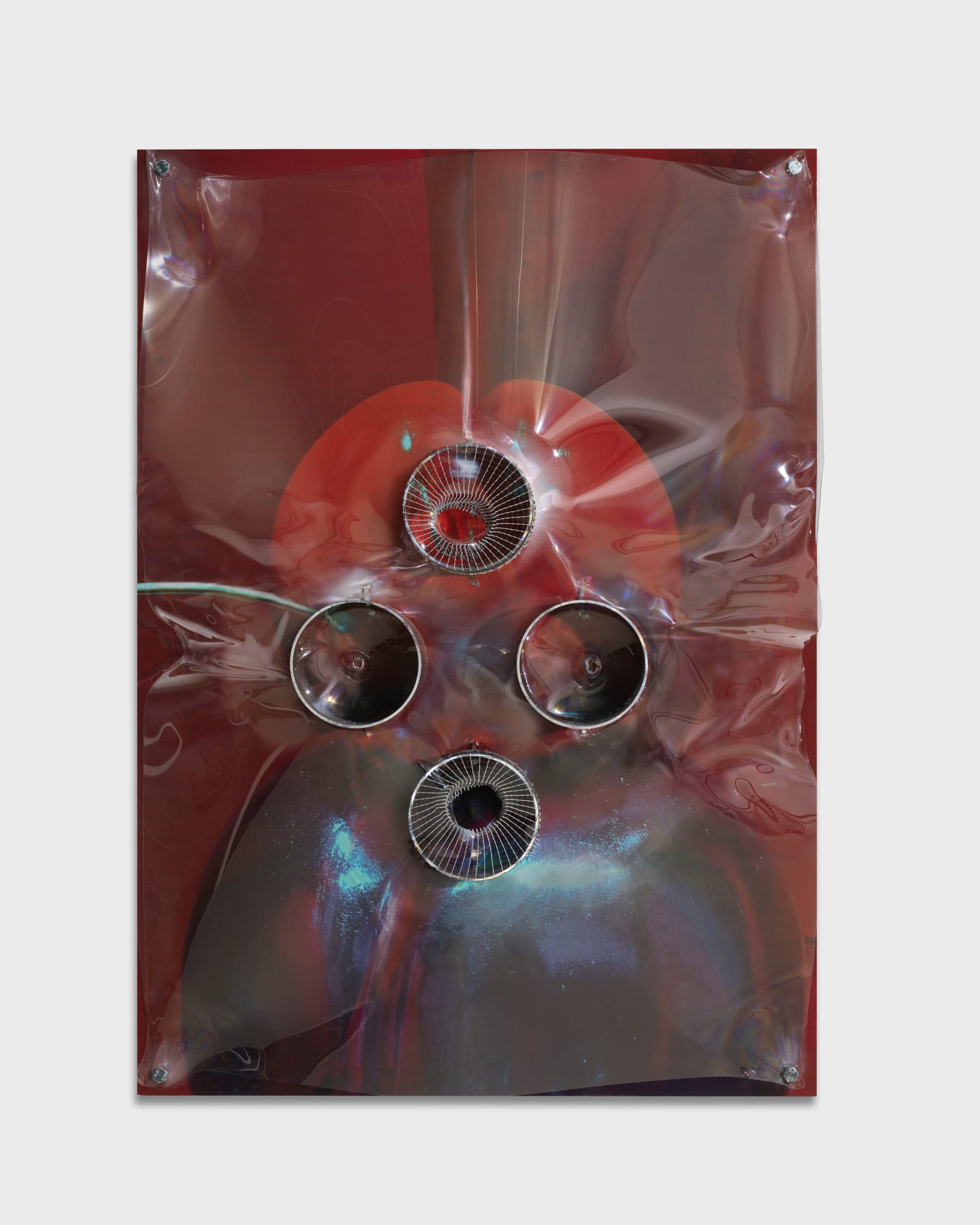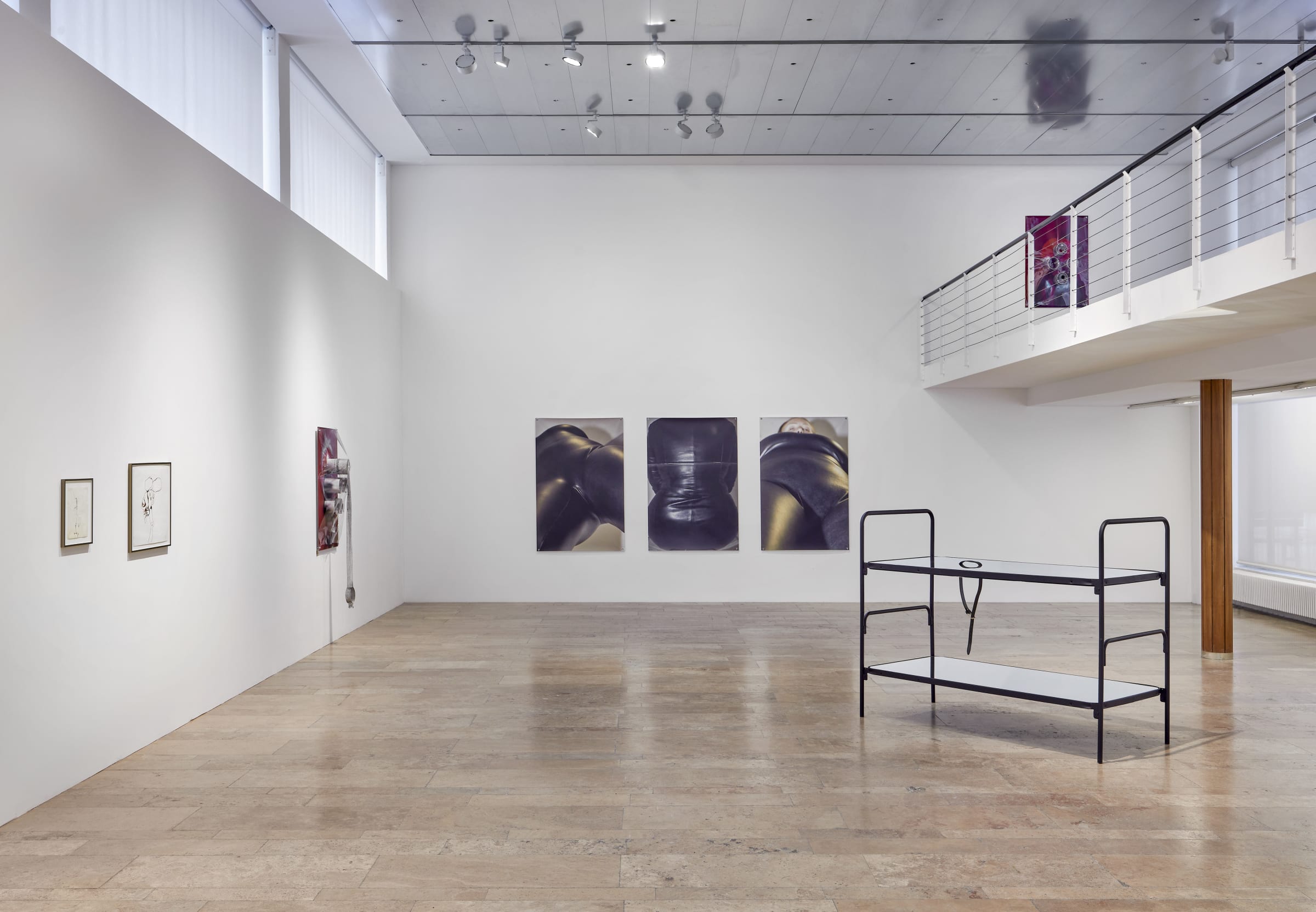-
Overview
Capitain Petzel is pleased to announce the group exhibition Non-Specific Objects.
The title of the exhibition acts as a counterpoint to the ideas expressed in Donald Judd’s canonical 1964 essay Specific Objects. Seeing as Judd characterized specific objects as separate from either sculpture or painting, they were precisely themselves, emphasizing the very materiality of a specific object that lacked expressive or symbolic content, especially to embodied subjectivity. This universal space, which aimed to be all encompassing, did not make room for gender, racial and sexual difference. The artists in this exhibition work against the hegemonic universal, creating space for difference in their works by means of abstraction, referencing bodies both literally and metaphorically.
The selection of works collectively embody the contemporary lived experience of those who occupy spaces outside the normative. While they often do not overtly mirror the human form, the works represent humanity through a lens of abstraction and resistance, inviting viewers to confront themselves and experience bodily otherness. From alienation and embarrassment to intimacy and desire, the artists offer both the possibility of self-reflection and shared moments of humor.
In focus is the abstracted body — be it the intimate nature, materiality, and particularities of the individual human body, the collective body that is built on shared historic experience, the extended and amplified body in an age of relentless augmentation, or the body that eschews realistic painterly modes of representation, opting for formally abstract or heavily stylized, sometimes nostalgic renditions of humanity. The diverse set of artistic practices does not adhere to strict principles of representation, but continually references the human, sometimes clearly and often obliquely. It highlights objects that refuse human form but relate to the human by embracing abstraction.
Nairy Baghramian (*1971, Iran)
Nairy Baghramian’s sculptures are some of the most striking depictions of the reality of the human body. Key to her practice is the legacy of Post-Minimalist sculpture, the “unruly” art that made space for difference in the late 20th Century. Baghramian does not fetishize material and refuses to adhere to one signature style, instead opting for a wide range of different formal approaches to sculpture. She has said that material should be the surface of the sculpture, instead of surface treatment. Representing a kind of purism, her sculptures are what they are, instead of hidden behind additional layering. Nairy Baghramian‘s Dwindlers might be aging and porous veins, gutter pipes, or ventilation ducts. Their fragility and the materials chosen for the sculptures as well as the title convey an impression of utter vulnerability. The tubular hollow bodies of unevenly tinted glass and the zinc-plated metal braces holding them together are indeed marked by Dwindling – shrinking, depletion, evanescence.
Baghramian’s recent solo shows include Aspen Art Museum, Colorado (2023); Nasher Sculpture Center, Dallas, Texas (2022); Secession, Vienna (2022); Galleria d‘Arte Moderna (GAM), Milan, Italy (2021); MUDAM Luxembourg (2019), among others. In 2022 Baghramian was announced as the Nasher Prize Laureate. In 2023 The Metropolitan Museum of Art selected Baghramian for its annual Facade Commission.
Barbara Bloom (*1951, USA)
Barbara Bloom is a conceptual artist best known for her multimedia installation works, which construct visual narratives that examine the relationships between objects, and the meanings generated by their juxtaposition. Bloom intricately constructs visual worlds across mediums including photography, installation, film and books. Semblance of a House: Eyes II consists of two painted portraits acquired by the artist at an antique store. The classically figural composition is made abstract and ambiguous by obscuring most of the portraiture, leaving visible only the eyes of the depicted figures. Therefore the work can be seen as something between figuration and non-representational art.
The artist’s solo exhibitions include Kunsthal Aarhus; MoMA, New York; Project Art Centre, Dublin; The Jewish Museum, New York; Martin-Gropius-Bau, Berlin; Museum of Contemporary Art, Los Angeles; Serpentine Gallery, London. Bloom has also participated in group shows in major international institutions, such as the Museum für Angewandte Kunst, Leipzig; Palais de Tokyo, Paris; Hamburger Bahnhof, Berlin; Kunsthalle Wien; Stedelijk Museum, Amsterdam; Deichtorhallen, Hamburg.
Monica Bonvicini (*1965, Italy)
Monica Bonvicini‘s art remains unapologetically forthright, consistently forging a critical connection with the environments in which it is displayed, the very materials that constitute it, and the dynamic roles assigned to both the viewer and the artist. Double Trouble is a sculpture by Monica Bonvicini in which the concepts of intimacy and domesticity are put under question. By presenting a metal bunk bed without the comfort of the mattresses, the artist dissociates the object from its function, which is allowing the person to find restful sleep in it, or a sense of security, pushing away the connection of a bunk bed with a children‘s room, or a student’s residency. In these times of urgentmigrant crisis and massive displacements, the artist links this kind of furniture to refugee camps and temporary shelters, places of transit where there is no chance of finding intimacy or domestic life.
Since the early 1990’s, Monica Bonvicini has held major solo exhibitions at renowned institutions, the most recent being at the Neue Nationalgalerie, Berlin (2022/2023); Kunst Museum Winterthur (2022); Kunsthaus Graz (2022); Bauhaus Dessau (2022); Kunsthalle Bielefeld (2020); Belvedere 21, Vienna (2019); Berlinische Galerie, Berlin (2017); BALTIC Center for Contemporary Art (2016), among others. From 2003 to 2017 Bonvicini was a Professor of Sculpture and Performance Art at the Akademie der Bildenden Künste in Vienna, Austria. Since 2017, she has been Professor of Sculpture at the Universität der Künste Berlin.
David Douard (*1983, France)
The work of David Douard can be seen as a reconfiguration of elements collected from a chaotic landscape. This landscape can be both material and digital, as a great deal of the artist’s source material is found on the internet, especially fragments of text that are incorporated into his sculptures, collages and installations. The chaos present within these dense environments gains form when assembled into clear structures, individual parts of the work acting as representations of their places of origin. Douard works with late capitalist excess and transforms the most contemporary forms of the over-produced into something akin to poetry.
David Douard’s work has been shown in international institutions, such as Le Consortium Museum, Dijon (2023); UCCA Dune, Qinhuagdao, China (2023); Serralves Museum, Porto (2022); FRAC Île-de-France, Paris (2020); Irish Museum of Modern Art, Dublin (2019) and Sculpture Center, New York (2014). He has participated in major biennials worldwide, among them Gwangju Biennale (2018); Taipei Biennial (2014) and Biennale de Lyon (2013).
Nikita Gale (*1983, USA)
Nikita Gale employs objects and materials like barricades, concrete, microphone stands, video, automated sound and lighting that function as stand-ins for the human body, or as indications of human participation, past or present. Gale’s work addresses the variety of ways in which physical space is politicized, highlighting this in broad-ranging installations focused on concerns of mediation and automation in contemporary performance practices. In Nikita Gale‘s ongoing RUINER series (2020–present), crowd-control fencing is entangled with concrete-dipped cord in elegant and uncomfortable sculptures. Here the artist turns toward absurdity to question the performativity of incarceration. Gale points to the ways in which technology affects human presence in performative settings, showing that technology not only functions as an extension or amplification of the body, but also as a means of transferring human labor through the body into the physical space, towards the viewer.
Nikita Gale’s work has recently been exhibited at Chisenhale, London; LAXART, Los Angeles; 52 Walker, New York; MoMA PS1, New York; Kunstraum Kreuzberg, Berlin; California African American Museum, Los Angeles and in “Made in L.A. 2018” at the Hammer Museum, Los Angeles.
Sanya Kantarovsky (*1982, Russia)
Sanya Kantarovsky works across mediums, including sculpture, animation and curation, with painting remaining at the center of his practice. Teeming with wry humor and unearthly narratives, Kantarovsky’s paintings propose scenarios of turmoil and investigate liminal spaces, physical proximities, affect, and cruelty. His sometimes delicate and often macabre subjects grapple with the confines of their bodies, interacting with one another in a painterly satire of status anxiety and existential crises.Booted captures the dynamics of power and dependency that evoke familial bonds. As is characteristic of Kantarovsky‘s practice, the work creates ambiguity, as it is not clear whether the scene depicted is one of tenderness or oppression.
Sanya Kantarovsky has recently been the subject of institutional solo shows at Aspen Art Museum, Kunsthalle Basel and Fondazione Sandretto Re Rebaudengo, Turin. His works have been presented in institutions such as Kunsthalle Zurich; Drawing Center, New York; Whitechapel Gallery, London; Baltic Triennial 13, Vilnius; Jewish Museum, New York and Sculpture Center, New York.
Kristina Nagel (*Germany)
Within her exploration of subjects, Kristina Nagel‘s practice results in depersonalized depictions. In her photographs, individuals become abstract forms. Faces are obscured, limbs are severed from their context and bodies are positioned at angles that may initially appear uncomfortable. These deliberate acts of deconstruction and disorientation serve a profound purpose – they construct brutally honest and, in turn, remarkably striking portraits that lay bare the multifaceted complexity of the human body.
Jack O’Brian (*1993, UK)
The sculptures of Jack O’Brien, assembled by employing various found objects and repurposed materials, emphasize the ambiguity of the materials themselves. The works create confrontation with fragmented humanity. His practice explores material culture through the lens of marginalized aesthetics to highlight the political histories of capitalism, and the production of desire. O’Brien’s erotically charged sculptures start from found objects that have a direct relation to the body in their human scale: musical insturments, industrial materials and aluminum balls, which the artist wraps and stretches to the point of abstraction. Visible through layers of assemblage and melted plastic, the cherry motif is chosen by the artist as a symbol of sensuality and the erotic. The cherry maintains a constant presence within mainstream culture. Its symbolic etymology is traceable from the ancient Greeks as the elixir of prosperity to recent advertising campaigns for The United Colours of Benetton and Burberry. The appropriation of this associatively dense and flirtatious image as the background can be seen as a nod to the fact that Jack O‘Brien‘s work is ostensibly about desire.
Jack O’Brien recently received the Camden Art Centre Artist Prize at Frieze London, 2023. His solo and duo exhibitions include Between Bridges, Berlin (2023); Sans Titre Invites, Paris (2023); Lockup International, London (2022); Polamagnetczne Gallery, Warsaw, (2022) and Ginny on Frederick, London (2021). Group exhibitions include Support Structures, Gathering, London, UK (2023); Memory of Rib, N/A Gallery, Seoul, KR (2022); Something is Burning, Kunsthalle Bratislava (2022); An Insular Rococo, Hollybush Gardens, London (2022).
Sin Wai Kin (*1991, Canada)
Dreaming the End, commissioned by the Fondazione Memmo in Rome and made on location around the city over the course of a year, is Sin Wai Kin‘s latest film that features characters which regularly populate the artist’s work. Among them, The Storyteller and Change, who move through a looping narrative rich with references, cycles, transitions, and the binding of language, taking tropes from various cinematic genres like thriller, noir, and fantasy to bring this to bear. Another level of abstraction is found in Sin Wai Kin’s series Portraits that renders time, the core of medium of film, motionless in a digitized suspended moment. The still life of the portraits transforms a tableaux marked by a post-cinematic break with film’s index, rendering the works closer to painting than moving images.Through world building the artist inhabits and reenacts themselves as a part of queer code, switching between portraits by Leonardo Da Vinci, Frida Kahlo, Man Ray and Caravaggio. A counterpoint to the appropriation of the Western Canon, they also employ Ming Dynasty artist Lu Zhi’s painting Dreaming of a Butterfly. The portraits double as performance art and drag that draws on Cantonese Opera, creating a third space where cultural contact becomes hybrid, where figuration is masked.
Sin Wai Kin was awarded the 24th Baloise Art Prize at Art Basel 2023 and shortlisted for the Turner Prize 2022. Their most recent solo exhibition was held at Fondazione Memmo, Rome, featuring their latest video work Dreaming the End (2023). Sin’s performances and works have been shown at international institutions including Centre d’Art Contemporain Genève, Geneva (2023); Tai Kwun Contemporary, Hong Kong (2022); Para Site, Hong Kong (2022); Channel, Somerset House, London (2022); ICA, Los Angeles (2022); The Guggenheim, New York (2022); The British Museum, London (2022), among others.
Alina Szapocznikow (*1926, Poland; †1973, France)
The Polish sculptor Alina Szapocznikow devoted her career to representations of the human body. Born in 1926 and active throughout the mid-20th century, Szapocznikow used resin, polyester, polyurethane and various other media to construct fragmented, macabre depictions of the human form. Her work is characterized by a unique and innovative approach to the representation of the body, incorporating themes of transformation and elements of surrealism to illustrate the fleeting and ephemeral nature of existence. Often linking her work to autobiographical experience, Szapocznikow was an astute observer of the paradigm shifts in Post-War Polish society, who also drew on her own struggles with illness. On view in this exhibition is what can be seen as Szapocznikow’s raw material — two intricate drawings that illustrate her varied process.
Works by the artist have recently been on view at Walker Art Center, Minneapolis (2023); Bourse de Commerce, Pinault Collection, Paris (2023); Whitechapel Gallery, London (2022); Louisiana Museum of Modern Art, Humlebaek (2021) and Galerie Loevenbruck, Paris (2021).
Franz West (*1947, Austria; †1973, France)
Often using everyday objects as the basis for his sculptures, such as furniture, altered or adapted to create new and unconventional forms and unexpected material juxtapositions, Franz West challenged traditional notions of sculpture and expanded the possibilities of artistic expression. His work bears an inherently bodily quality, not concerning itself with appearing obviously designed or engineered. West often encouraged viewer interaction. He created sculptures that were meant to be touched, held, and even worn. Untitled (Sit Down) by Franz West encourages interaction through text. Bold white lettering that reads ‘SIT DOWN’, invites viewer participation. But the work subverts this invitation by being placed on a pedestal, eliminating the possibility of actual interaction and retaining the untouchability of a sculpture.
The work of Franz West has recently been exhibited in such institutions as Fondazione Prada, Milan (2024); Albertina Modern, Vienna (2022); Walker Art Center, Minneapolis (2021); Tate Modern, London (2019); Centre Pompidou, Paris (2018) and many others.
-
Installation Views
-
-
Works

-
Every part has a role to play in Nairy Baghramian’s work. Although she is very much a sculptor, a recent recipient of both the prestigious Nasher Prize and the Metropolitan Museum in New York’s 2023 façade commission, she is deeply attuned to performance and thinks in groupings even within a single work. Showing contingency as well as contradiction is part of her method. This is apparent in the construction of the works – in her various techniques of casting, moulding, carving and joining, and in her formal language of bends, droops, arcs and blobs.
– Amelia Stein, Frieze
-

Barbara Bloom
Semblance of a House: Eyes II (from the series Semblance of a House), 2013/2015Pair of portrait paintings (behind masking box)
47.5 x 39.5 cm
18.7 x 15.5 inches -
-
Give Monica Bonvicini a space and she will fill it with something magical… or disturbing, or provocative. The German-Italian sculptor is a virtuoso when it comes to shaping her work to the environment in which it will be exhibited.
– Richard Pallardy, ODDA Magazine -

-
-

-

-

-
-
-
-
Sanya Kantarovsky’s work embodies an upside-down world filled with tragic yet essential truths about our existence. It resonates with the idea that art is not just about morality or purity, but, as the artist has stated 'grime and pain and totally unfair contradictions of being alive.’ Kantarovsky invites viewers to confront a range of emotions — from alienation and embarrassment to intimacy and desire.
-

-
-
Sin Wai Kin’s practice as a storyteller draws attention to the gaps between the stories we are told and the lives we live, asking who is given the power to tell us these stories and what these stories enforce. The London-based artist’s latest film, Dreaming the End, compounds this thinking. As so often is the case within Wai Kin’s practice, this work looks at our relationships to our bodies, our bodies’ relationship to the world, and how, in the space between these two, our sense of identity manifests.
– Lisette May Monroe, Artnet
-

-
-
-
-
 Kristina NagelTHREAD I, 2024Print on PVC, hook screws165 x 111.3 cm
Kristina NagelTHREAD I, 2024Print on PVC, hook screws165 x 111.3 cm
65 x 43.8 inchesEdition of 1 + 2 AP -
 Kristina NagelTHREAD II, 2024Print on PVC, hook screws165 x 114.5 cm
Kristina NagelTHREAD II, 2024Print on PVC, hook screws165 x 114.5 cm
65 x 45.1 inchesEdition of 1 + 2 AP -
 Kristina NagelTHREAD III, 2024Print on PVC, hook screws165 x 111.3 cm
Kristina NagelTHREAD III, 2024Print on PVC, hook screws165 x 111.3 cm
65 x 43.8 inchesEdition of 1 + 2 AP
-
-
-
-
 Jack O’BrienReturn, 2023Soft pastel, spray paint, photographic print mounted on aluminium, heat-formed PETG plastic, aluminium pipe, butchers netting118.9 x 84.1 x 22 cm
Jack O’BrienReturn, 2023Soft pastel, spray paint, photographic print mounted on aluminium, heat-formed PETG plastic, aluminium pipe, butchers netting118.9 x 84.1 x 22 cm
46.8 x 33.1 x 8.7 inches -
 Jack O’BrienPassage, 2023Soft pastel, spray paint, photographic print mounted on aluminium, heat-formed PETG plastic, aluminium pipe, butchers netting118.9 x 84.1 x 22 cm
Jack O’BrienPassage, 2023Soft pastel, spray paint, photographic print mounted on aluminium, heat-formed PETG plastic, aluminium pipe, butchers netting118.9 x 84.1 x 22 cm
46.8 x 33.1 x 8.7 inches
-
-
Visible through layers of assemblage and melted plastic, the cherry motif is chosen by the artist as a symbol of sensuality and the erotic. The cherry maintains a constant presence within mainstream culture. Its symbolic etymology is traceable from the ancient Greeks as the elixir of prosperity to recent advertising campaigns for The United Colours of Benetton and Burberry. The appropriation of this associatively dense and flirtatious image as the background can be seen as a nod to the fact that Jack O'Brien's work is ostensibly about desire.
-

-
-

-

-

Franz West
Untitled (Sit Down), 1996 – 20034 metal chairs, wooden board and lacquer (8 parts)
Chairs: 77 x 63 x 42 cm / 30.3 x 24.8 x 16.5 inches
Board: 347 x 80 cm / 136.6 x 31.5 inches -
-
Press
-

ArtReview: "Delinquent Bodies, Non-Specific Objects"
Jasmine Reimer, 26 April 2024Non-Specific Objects at Capitain Petzel, Berlin leaves us with an understanding of how to resist the conceptual boxes that we’re forced into Non-Specific Objects takes its lead from American sculptor Donald Judd’s 1965 essay ‘Specific Objects’ and its omission of embodied, racial and gender differences by presenting art that continuously refers to them. It brings together works by 11 artists that challenge Judd’s attachment to identifying the essence of sculpture and painting, though, ironically, the show aligns with his observation about artistic categories: whether material, symbolic or linguistic, these are never as solid as they appear. In the way that Judd’s essay reveals the difficulty in defining sculpture and painting, this exhibition challenges conventional ways of interpreting materials and their associations with identity and the body.
To read more, click here.
-

Berlin Art Link: "Challenging Bodily Norms in ‘Non-Specific Objects’"
Nadia Egan, 9 February 2024In 1964, Donald Judd wrote the essay ‘Specific Objects,’ a key text in the development of Minimalist art theory. In his essay, Judd articulated his ideas on art and objects, advocating for a shift away from traditional forms of artistic expression. He emphasized the importance of the physical presence and materiality of art objects, rejecting representational and symbolic content. He introduced the term “specific objects” to describe artworks that exist as self-contained entities, challenging the conventional boundaries between painting and sculpture. He argued for an art that was devoid of narrative or illusionistic elements, aiming for a direct and immediate experience for the viewer.
To read more, click here or download it below.
-
-
Related Artists









